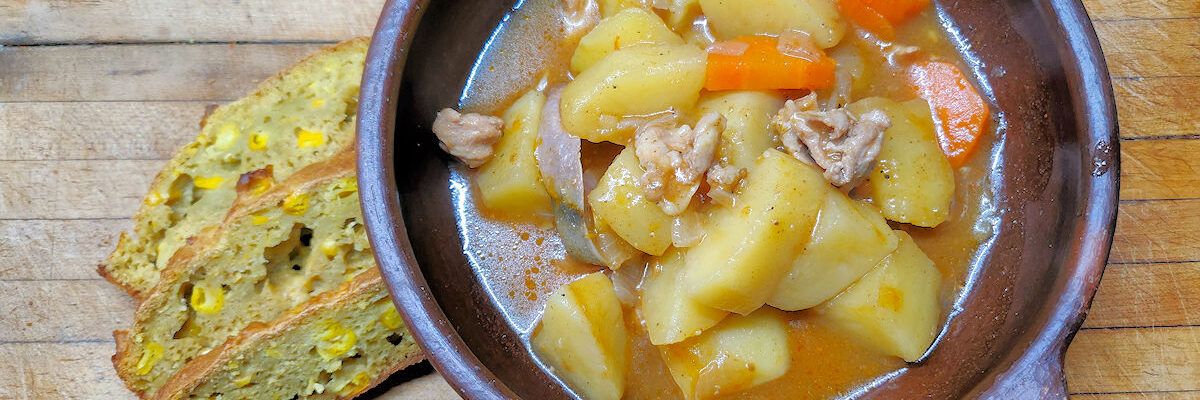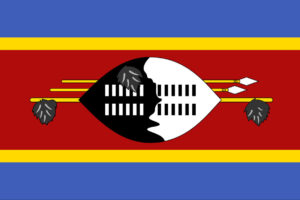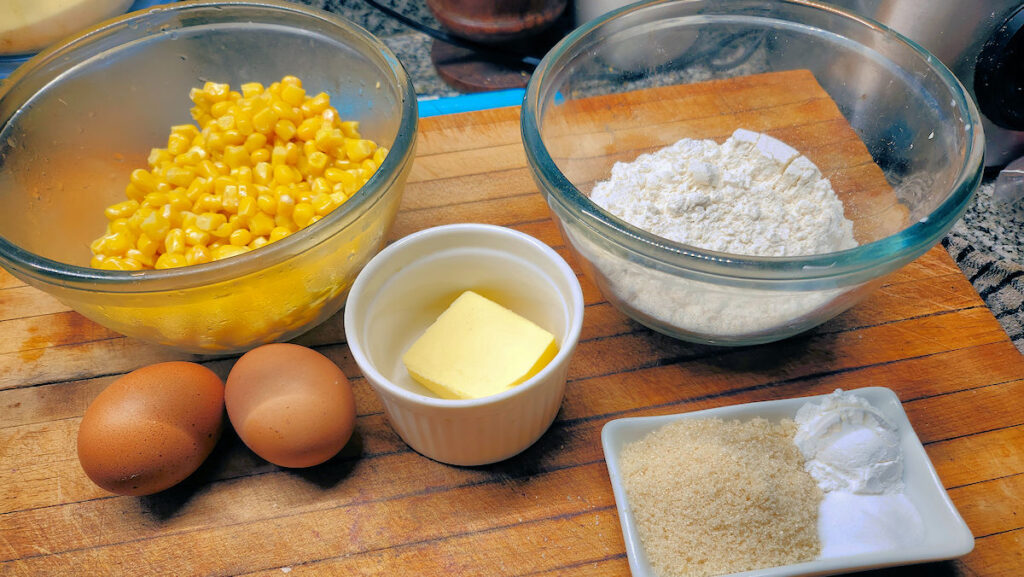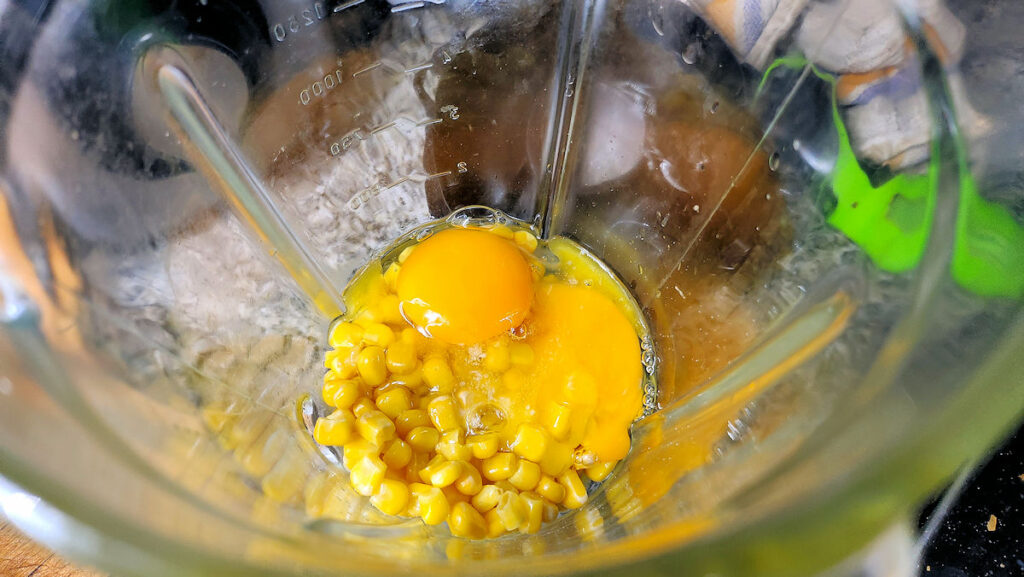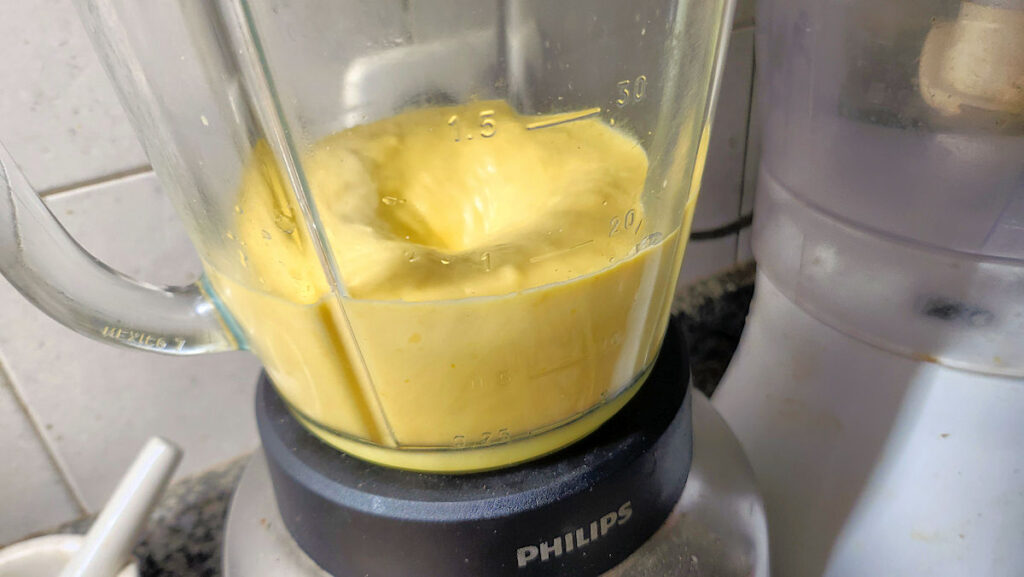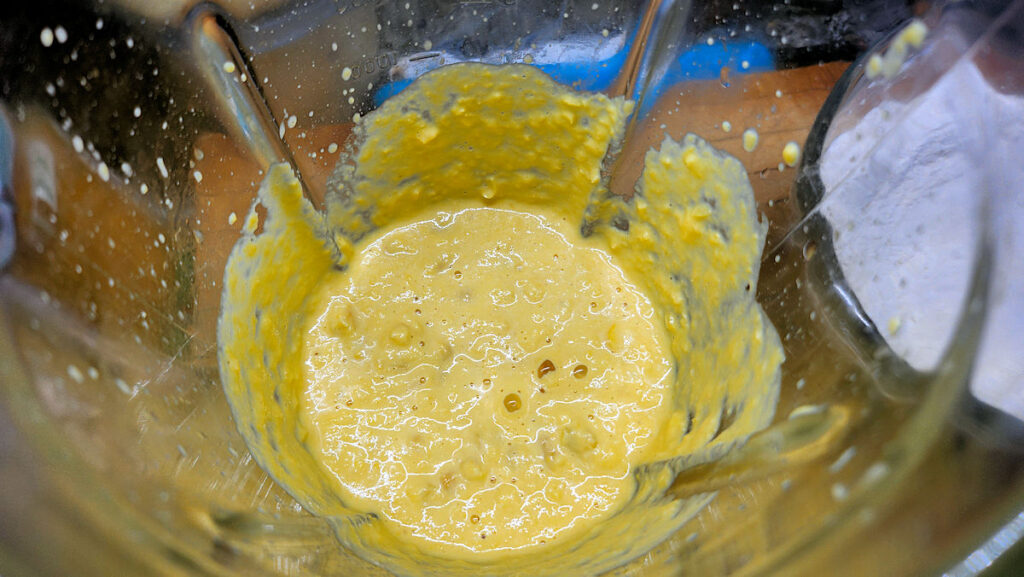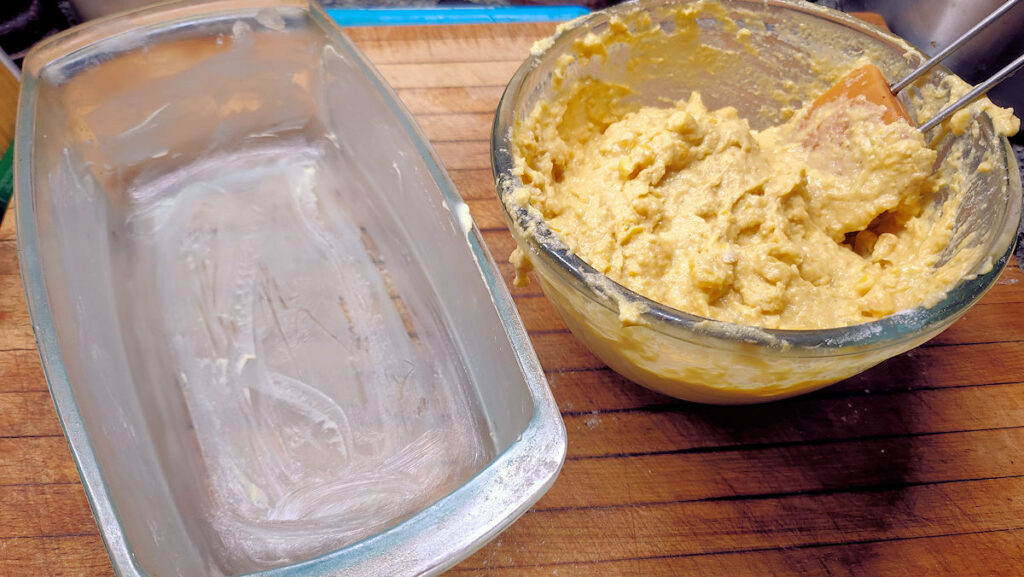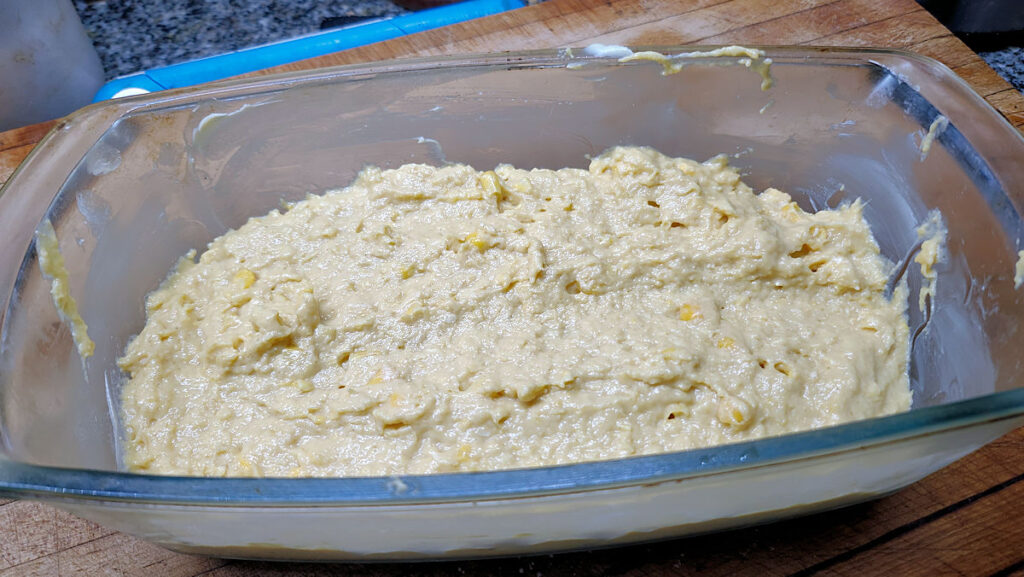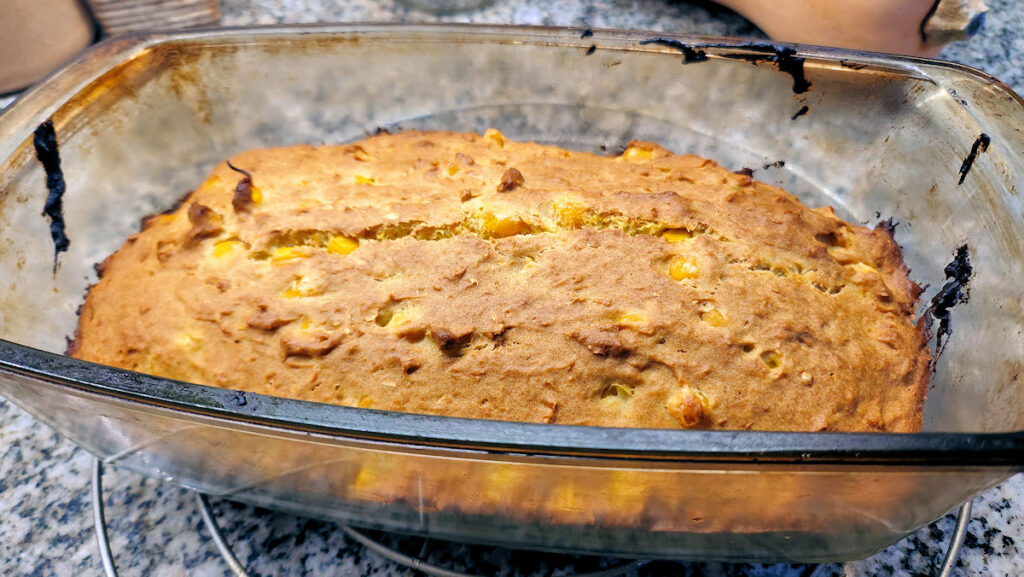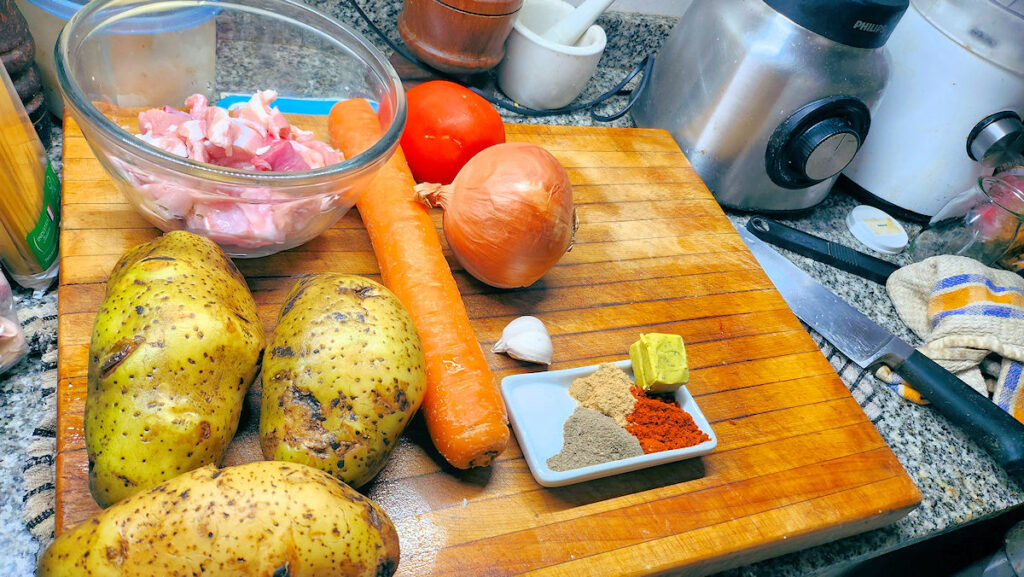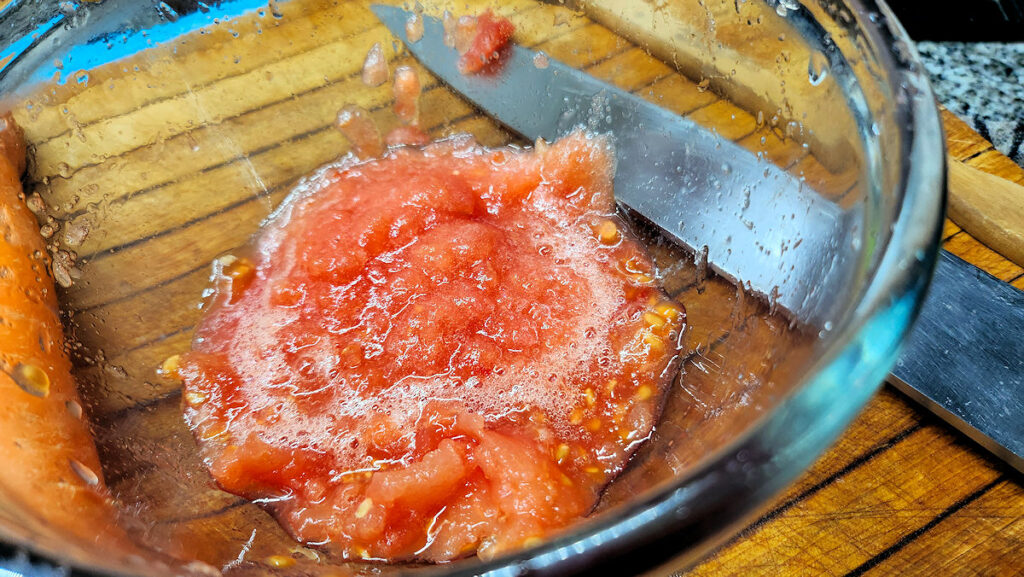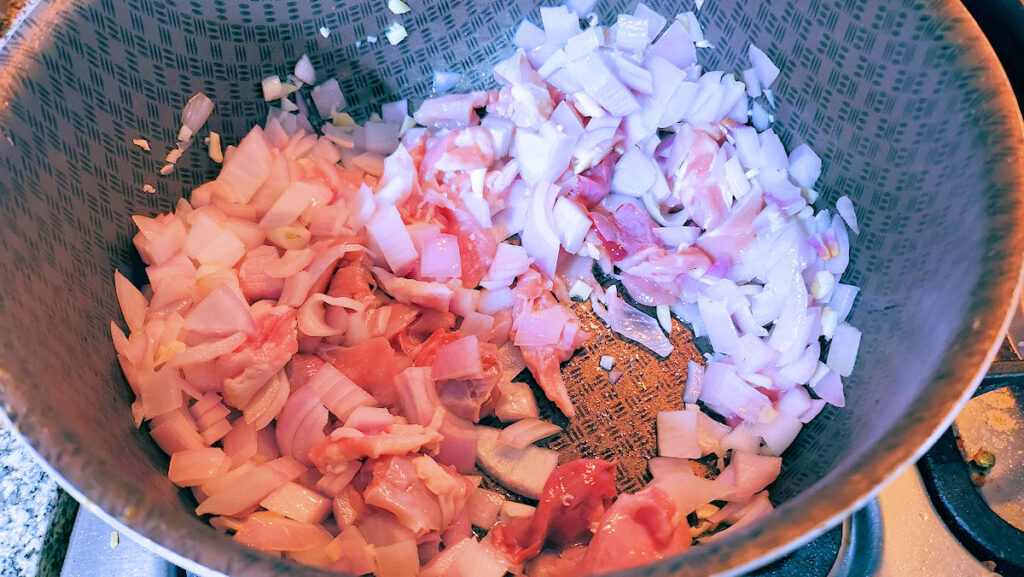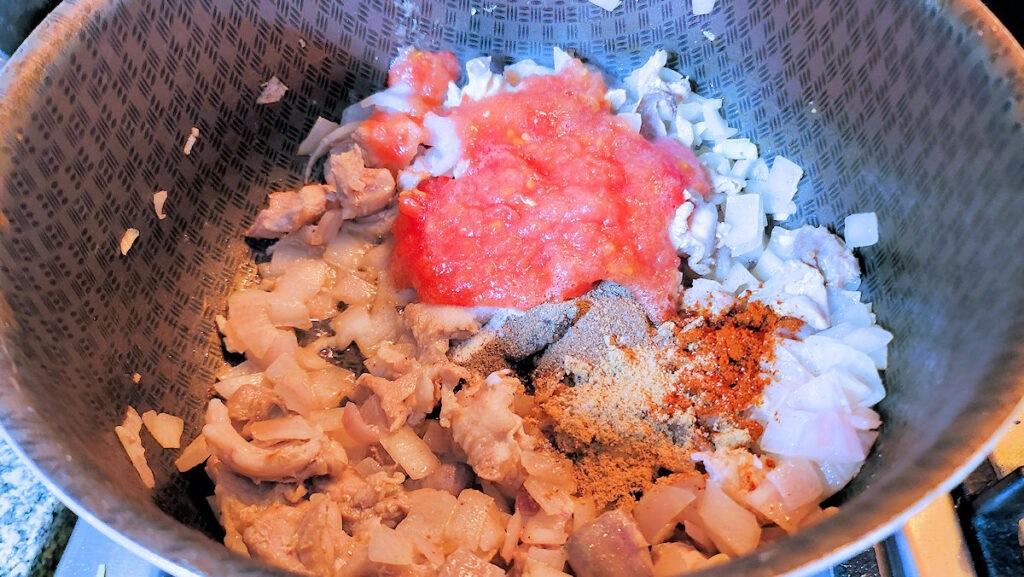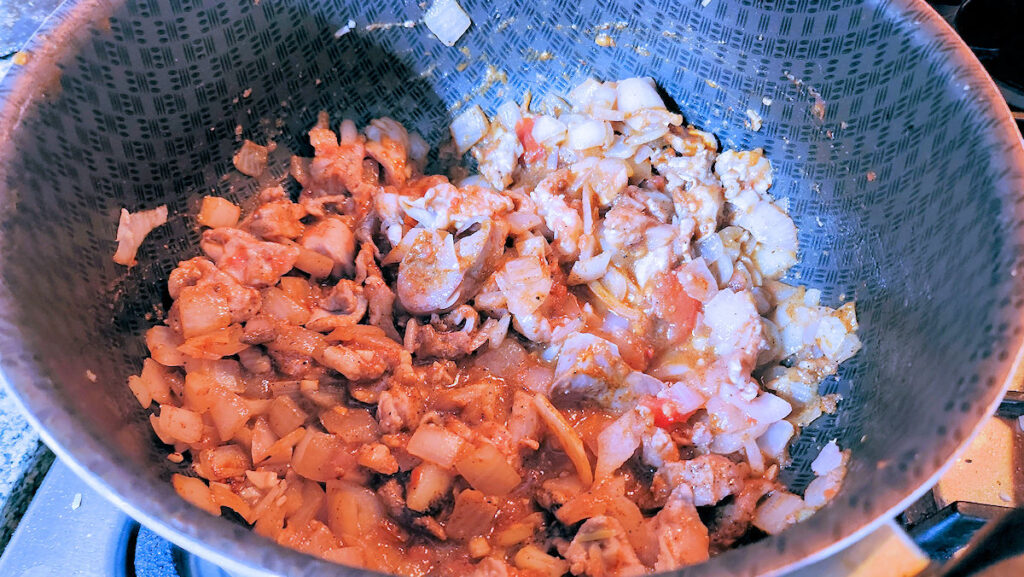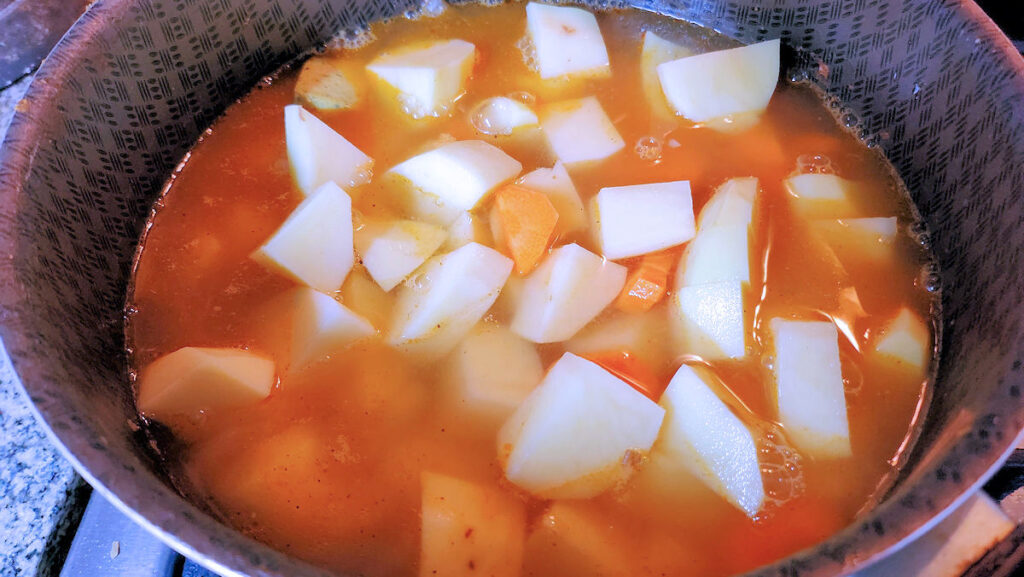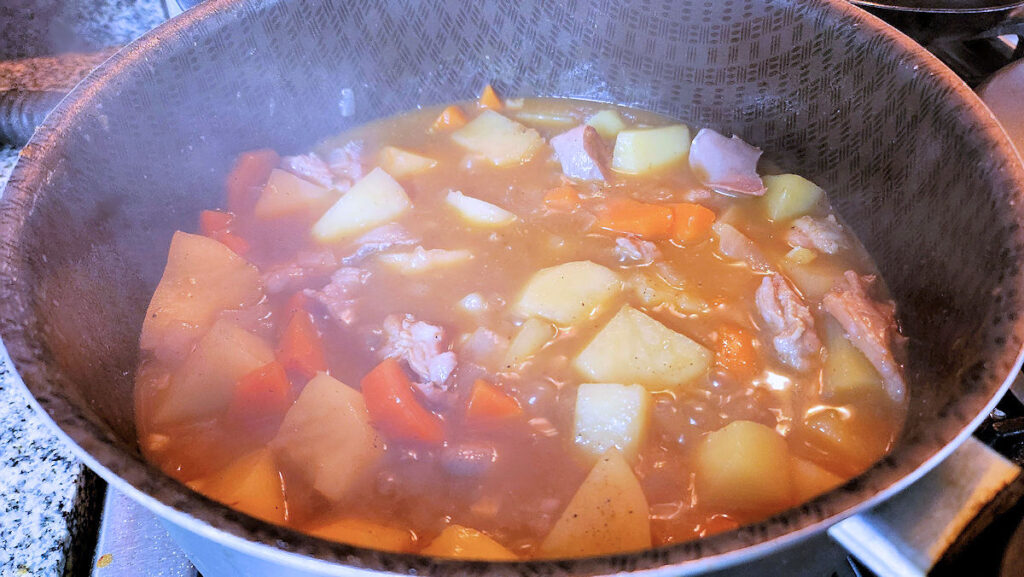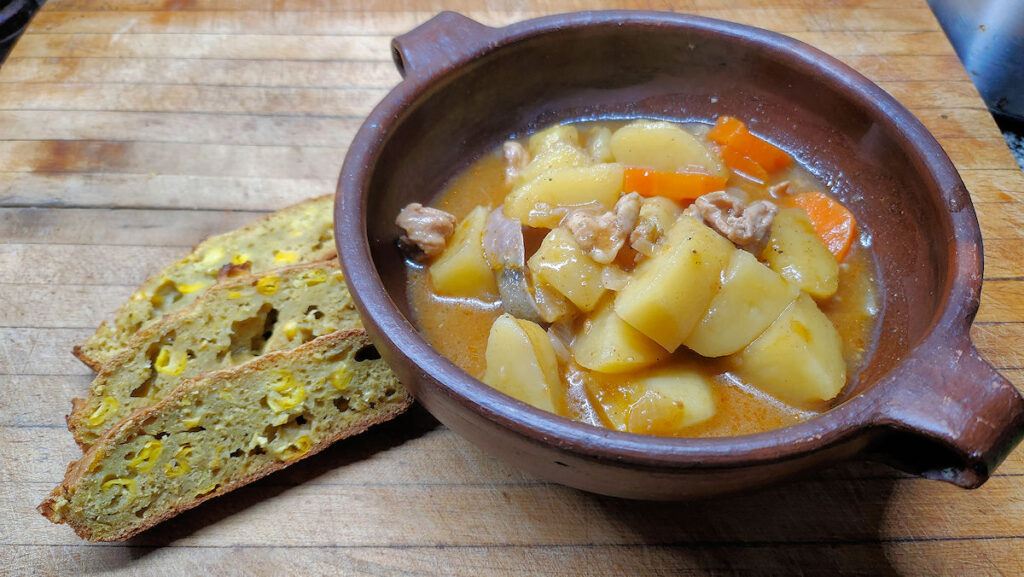Eswatini, formerly known as Swaziland, is a landlocked country situated along the eastern side of South Africa, bordering Mozambique. It extends approximately 110 miles (175 km) from north to south and 80 miles (130 km) from west to east, making it just a touch larger than Connecticut, with a population of around 1.2 million people, or about a third of CT’s population. In April 2018, the country officially changed its name from the Kingdom of Swaziland to the Kingdom of Eswatini. The majority are ethnic Swazis, with smaller Zulu and white African communities, mainly of British and Afrikaner origin. Traditional occupations included subsistence farming and herding, but many now work in the urban formal economy and government. About 90% of the people identify as Christian, almost all of them Protestant of one domination or another, and often blended with traditional beliefs. The official languages are Siswati (related to Zulu) and English.
The Eswatini flag, adopted in 1968, consists of five horizontal stripes: two blue at the top and bottom, a central red stripe, and thin yellow stripes bordering the red. The central focus is a black and white Nguni shield with two spears, symbolizing protection from enemies, and peaceful, sort of yin-yang coexistence between the white and black populations. The red represents past battles, blue signifies peace, and yellow represents the country’s resources.
Eswatini’s cuisine reflects its primary crops of sorghum and maize, often served with goat meat – the most common domesticated food animal. The farming industry relies on sugar cane, tobacco, rice, corn, and peanuts. Traditional dishes include various types of porridges and drying meat for later use is common practice.
For our project, I went with a modern version of a traditional cornbread. The very traditional version, sinkwhat sembila, is more like a tamal than a bread – a mix of ground corn, salt, and sugar, steamed in a corn husk. But modern bakeries and home bakers often make it much more like a loaf of bread – called Mealie Bread. On the soup side, going with something goat based seemed like the right move, and I went with a rich, almost stew-like soup called Imbuti. It did require me buying an entire small goat, frozen, from one of my neighborhood butchers. Luckily he was wiling to cut it into sections and wrap each piece separately, so I could stick all but the one I was using (the shoulders and head) into the freezer for future use.
We have about a cup and a half of corn kernels – either freshly cut off the cob, or, basically, one thawed frozen package of corn; about 3/4 cup of all purpose flour, two eggs, two tablespoons of butter, two tablespoons of sugar, 1 teaspoon of baking powder, and a half teaspoon of salt.
Put 1 cup of the corn, the eggs, and butter (melted) in a blender.
Puree until completely smooth.
Add the rest of the corn and pulse twice, just to coarsely chop it.
Mix with the dry ingredients. Butter a loaf pan.
Put in the pan, and bake in a medium hot oven for about 30-35 minutes.
And, voilà! Mealie Bread!
Cut the goat meat into bite sizes pieces (this is most traditionally made as a thicker stew, with pieces of goat left on the bone, but the soup version seems to be an adaptation geared more to modern living) – you want about a pound of meat; a carrot, a tomato, an onion, a couple of garlic cloves, some potatoes; and then salt, pepper, ginger, hot paprika, and vegetable stock cubes (obviously a modern addition, and probably to replace some of the flavor lost in not using the bones – ideally, maybe, make a goat stock with the bones). I started with a teaspoon of each, and then later adjusted with a bit more salt.
Grate the tomato, which is a quick way to separate it from the skin.
In a little oil, saute the chopped onion and garlic until softened.
Add the goat meat, tomato, and spices and saute for a few minutes.
You should get some color on meat in particular – not browned, but at least… tinged.
Add the vegetables, cut into bite sized pieces, the stock cubes, and top with water. Bring to a boil, reduce heat to low, and simmer for an hour and a half.
We have soup! Adjust the seasoning – I added probably just shy of another teaspoon of salt.
And, serve!
The soup – absolutely delicious! The cornbread too, though I’ve had better, and despite having cooked the designated amount of time and sounding hollow to a thump on the bottom, it collapsed as it cooled, so it wasn’t quite cooked through – maybe another 5-10 minutes. Just dependent on how hot a “medium hot oven” is – I’d probably just up the heat a little from where I had it. What else would I do to improve it? I think I’d brown the meat more fully beforehand – before even cooking the onions and garlic, and then just set the meat aside to add back in at the right step. Other than that, I liked it as is.
Next time up, we’re staying, it seems, in Africa, as we move on to Ethiopia.
